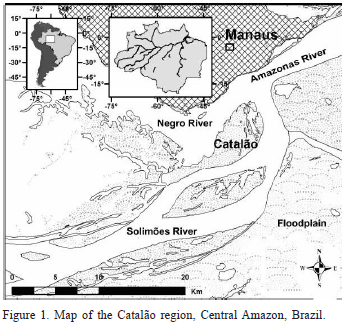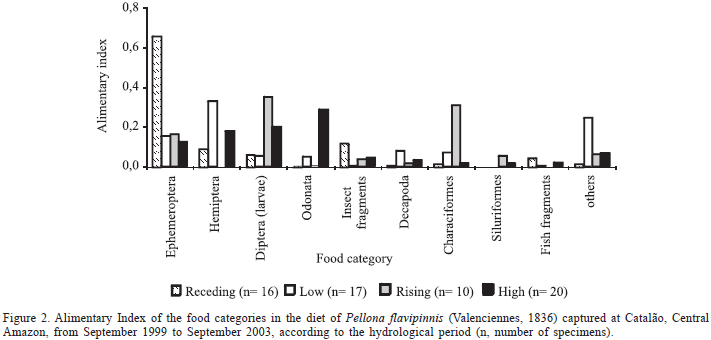The feeding habits of Pellona flavipinnis (Valenciennes, 1836) at Catalão, a floodplain area on the Brazilian Central Amazon was studied. Data was obtained during three hydrological cycles, between September 1999 and September 2003. Diet composition, daily and seasonal variation in the feeding activity and the relationship between predator's size and its prey were analyzed. Almost 80% of the food consumed has autochthonous origin and diet was composed basically by insects and fish. Juvenile fish predominated in the stomach contents of all size classes but there was no significant relationship between predator's size and its prey. Pellona flavipinnis may be considered a carnivorous species which feeds mainly on juvenile (young-of-the-year) specimens of other fish. More intense feeding activity occurred at night and in the high water period.
Amazon basin; hydrological cycle; diet; carnivory; feeding activity





